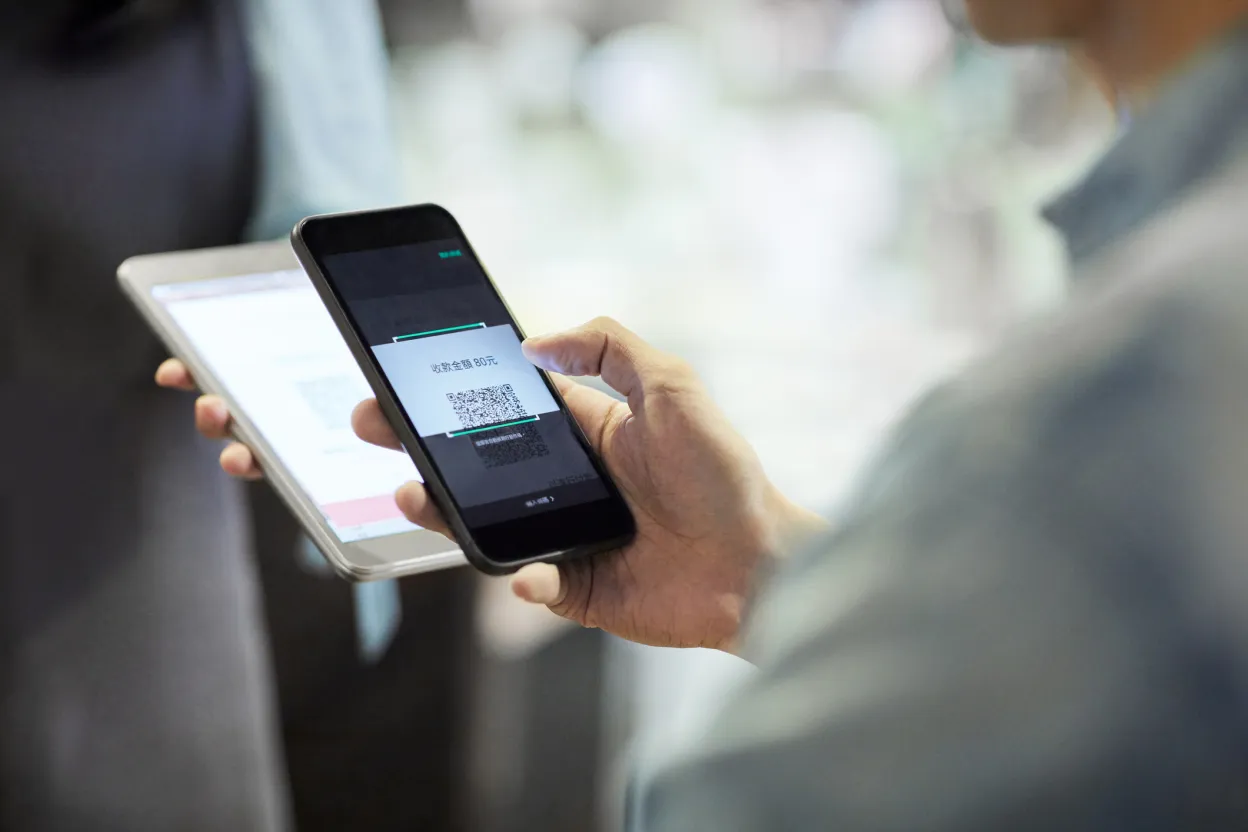The simple act of payment has undergone a myriad of changes over the years, taking us on a journey from cash-based societies to digital commerce dominance. We decided to look back at this evolution with Eddie Black, Product Introduction Manager at Ingenico. Eddie will be a familiar face (and voice) to many in the UK payments industry. We talked about his forty years in payment and the different innovations he’s witnessed, as well as his predictions for the future…
So, Eddie, take us right back to the beginning. What brought you to the world of payments, and what was the technology being used at the time?
I joined Fortronic (later bought by Ingenico in 1999) as an electronic design engineer straight from Edinburgh University in 1983, during the halcyon days of Silicon Glen. I initially worked on the electronic design of bank teller terminals.
Back then, card payments were processed on mechanical imprinters with three ply stationery. Transactions were acquired by taking payment slips to your local bank branch, and the cheque book was king. The first payment terminals started to arrive in 1985 with petrol stations proving a key market due to their association with fuel cards.
From your engineer’s perspective, what has been the key evolution for payment terminals?
For me, one of the most important changes has been processing speed and security. My first involvement with payment terminals was in the mid-eighties with the F75, a large, power hungry product by today’s standards, where the microprocessor was clocked at 4 MHz and the memory was measured in kilo bytes. The card went through a magnetic stripe reader and communication was by dial up modem.
Today, payment terminal microprocessors are clocked in excess of 1 GHz (250 times faster) and memory is measured in Giga bytes (10,000 times larger). These are highly secure devices with chip cards (EMV) providing secure card holder authentication, and encryption algorithms delivering the secure communication of transaction data. Not only this, but today’s terminals can be handheld, and always connected thanks to wireless communications.
How far technology has come - truly embracing Moore’s law!1
Which product or solution have you most enjoyed introducing to customers?
There have been three stand out solutions over the years. Firstly, the F75 – this was Fortronic’s first payment terminal and holds a special significance as I did not realise at the time just how much it would shape the rest of my career.
Secondly, the terminal that has given me most pleasure was the TT41 (transaction terminal, fourth generation, version one). This was the first product where I had overall control of the hardware product design rather than just the electronics. It also provided the opportunity to work closely with our main customers to deliver a solution to meet their needs. In addition, I was part of the team that delivered two design patents for the product.
Finally, I’d select the iPP350 retail PIN Pad which was deployed by many customers including most of the UK tier one retailers. In addition to the hardware, I managed the retail PIN Pad application (RAM) roadmap, an application that has grown and is now deployed by many customers in different countries.
In the meantime, the world of payments doesn’t stand still and most recently I have worked on the introduction of the Android based DX8000 for the UK market, working closely with the RNIB to deliver a fully inclusive payment solution.
Android is having a big impact on the payments market, but it’s not the first shift. What other big transformational changes have you witnessed?
The first key change was the deployment of terminal management systems to deliver merchant configuration data and software updates. Merchant self-install was a huge chan that were plugged into the terminal. If the software needed to be updated, an engineer would go to the site, unplug the memory chips and put in new ones. The merchant configuration was delivered by swiping a set of magnetic cards on the terminal to program merchant details and application behaviour, providing the first example of engineer installation.
Today, merchants perform the installation themselves. The terminal connects over IP to the terminal management and downloads any software updates and relevant merchant configuration. The functionalities of self-install will continue to expand through our Terminal as a Service offering.
The second innovation that brought huge change was the introduction of radio communications. The first terminals to use this technology were countertop based due to their size, and communication was through an analogue modem over the wires of the PSTN. Later, the availability of Bluetooth, then GSM / GPRS / 3G and 4G and finally Wi-Fi, coupled with rechargeable battery technology, really opened up the opportunities for mobile terminals.
Most recently, contactless payments have brought about huge changes in consumer behaviour. ‘Tap & Go’ originally came to life in the UK during the London Olympics and has continued to grow at pace. The increased role of contactless during the pandemic saw the technology take on even more significance by providing ‘a safe way to pay’, something none of us anticipated would be necessary. The technology has also moved onto devices emulating contactless cards, such as mobile phones, wrist bands, rings, and other wearables.
When you began your career, did you imagine that one day we would be talking about paying for goods on a digital payment terminal in the metaverse?
Absolutely not. There were no PCs back then, far less the internet. Computers were ‘main frames’ with visual display units (VDU) and removable memory was “floppy” with a capacity of 100Kb. The cloud was where the rain fell from to make the whisky! Now we have cloud computing, virtual reality headsets and crypto currencies. It will be interesting to see how this virtual world develops.
Putting the metaverse to one side, what else do you think the future holds for payment?
The fundamentals of payment have not changed; there is a merchant and a consumer performing a transaction that is routed via an acquirer to the card issuer for settlement. What is changing is the technology and new disruptive players coming to market with innovative ideas. A perfect example of this is the smart phone which for many now acts as a digital wallet. Will the growth of artificial intelligence expand its role and provide consumers with a wider digital shopping experience?
Security will continue to be an important topic, but the PIN code will come under threat from biometric customer verification such as facial and palm recognition. Facial recognition is a contactless verification that is currently under trial with the card schemes who are leveraging the existing customer trust in the technology which unlocks their smart phone.
Another important innovation area will be alternative payment schemes which will grow outside of the traditional card schemes, for example through QR based payments as new players look to gain market share. Will other technologies such as crypto currencies, the IoT, etc. find their way into day-today transactions? Only time will tell.
What is clear, is these innovations will drive demand for payments ‘anytime, anywhere’ with a consistent secure experience in an ecologically sustainable way. And in such a complex ecosystem, no one entity will be able to service the market themselves, leading to new partnerships and further evolutions in payments.
One thing’s for sure, the next forty years will be just as interesting!
Ready to elevate your payment experience? Explore innovative payment solutions and meet your customers’ needs today!











